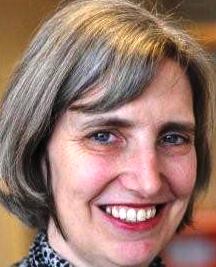Infant Feeding Part 2: Formula Feeding course


This session will give you the information you need to help parents and carers to minimise the risks of formula feeding.
Learning objectives
By the end of this session you will be able to:
- Advise parents on minimising the risks of infant formula feeding by feeding according to feeding cues and making-up and storing feeds safely
- Describe the development of formula milks over time
- Describe the differences between the types of infant formula milks available on the current market
- Describe how to bottle feed responsively
This session will give you the information you need to help parents and carers minimise the risks of formula feeding.
Before commencing this session you should complete the following HCP session:
- Growth and Nutrition - Infant Feeding Part 1: Breastfeeding (402-0042)
Mary qualified as a nurse in 1977 (University of Edinburgh), and as a midwife (Edinburgh) in 1978. She was awarded a PhD in 1982, having spent several years with the MRC Reproductive Biology Unit, conducting clinical research in breastfeeding.
Mary worked as a midwife in Oxford and spent several years teaching in Alberta, Canada before taking up post as Director of the Midwifery Research Initiative at the National Perinatal Epidemiology Unit in Oxford (1988).
She was appointed as Professor of Midwifery Studies in the University of Leeds (1994), before taking up her current post as Professor of Mother and Infant Health in the University of York (2004).
She established and currently directs the multidisciplinary Mother and Infant Research Unit, where she leads a programme of work on maternal and infant nutrition, including research and evidence-based policy and practice.
Mary has conducted research and systematic reviews on infant feeding for NICE, the NIHR Health Technology Assessment programme, the Cochrane Collaboration, and the Department of Health.


Following qualification as a midwife in Bristol in 1981, Alison experienced all aspects of clinical midwifery working in Bristol and Middlesbrough in the UK.
She spent three years working as a volunteer in Malawi, Central Africa, in the role of midwife-in-charge and midwifery tutor at a small rural mission hospital. Alison qualified as a midwife teacher at the University of Nottingham and was a midwifery lecturer at the University of Teesside until 2006.
Alison gained an MA in Applied Educational Studies at the University of York in 1993. In 2005 she was seconded to the Mother and Infant Research Unit at the University of York. In 2006, she was awarded a National Institute of Health Research Doctoral Fellowhship. Her doctoral research explored the breastfeeding experiences and support needs of women of Bangladeshi origin living in the UK.
Alison is currently employed as a research fellow at the Mother and Infant Research Unit.
Maureen Minchin BA Hons, MA (Melb) TSTC is a medical historian who changed course from academia to advocacy as a result of her experience of motherhood.
Her book, ’Breastfeeding Matters’ (1985) was declared a “milestone in the history of breastfeeding” by Prof JD Baum.
She has worked extensively in the area of infant nutrition, acting as a consultant on projects for WHO, USAID and UNICEF. She was influential in the creation of the International Board of Lactation Consultant Examiners (IBLCE), and has educated thousands of health professionals about lactation and infant feeding.

- Anaesthesia Fundamentals | Physiology | Ventilatio...
- Posted By eIntegrity Healthcare e-Learning
- Posted Date: 2024-12-26
- Location:Online
- This session describes how and why ventilation and perfusion vary in the healthy lung. Causes of hypoxia, such as hypoventilation, increased dead space and shunt, are discussed to help the trainee explain and manage hypoxia clinically.
- Anaesthesia Fundamentals | Physiology | Pulmonary ...
- Posted By eIntegrity Healthcare e-Learning
- Posted Date: 2024-12-26
- Location:Online
- This session covers the measurement and clinical importance of lung volumes, including functional residual capacity and dead space. Information regarding the performance and interpretation of flow-volume loops is also included.
- Anaesthesia Fundamentals | Physiology | Co2 Carria...
- Posted By eIntegrity Healthcare e-Learning
- Posted Date: 2024-12-26
- Location:Online
- This session covers the physiology of how carbon dioxide is carried by blood, including its conversion into bicarbonate ions and the role of the red blood cell and haemoglobin in this process. The session also describes how buffers work, and the fundament
- Anaesthesia Fundamentals | Physiology | Function o...
- Posted By eIntegrity Healthcare e-Learning
- Posted Date: 2024-12-26
- Location:Online
- This session focusses on the function of haemoglobin in oxygen (O2) carriage from the lungs to other tissues where cells are supplied with the O2 required for oxidative phosphorylation in the mitochondria. We will cover the structure
- Anaesthesia Fundamentals | Physiology | Gaseous Ex...
- Posted By eIntegrity Healthcare e-Learning
- Posted Date: 2024-12-26
- Location:Online
- This session will introduce you to the physiological effects of altitude and the adaptations that occur with acclimatization. It also introduces the pathology and physiology of high pressure and decompression.








